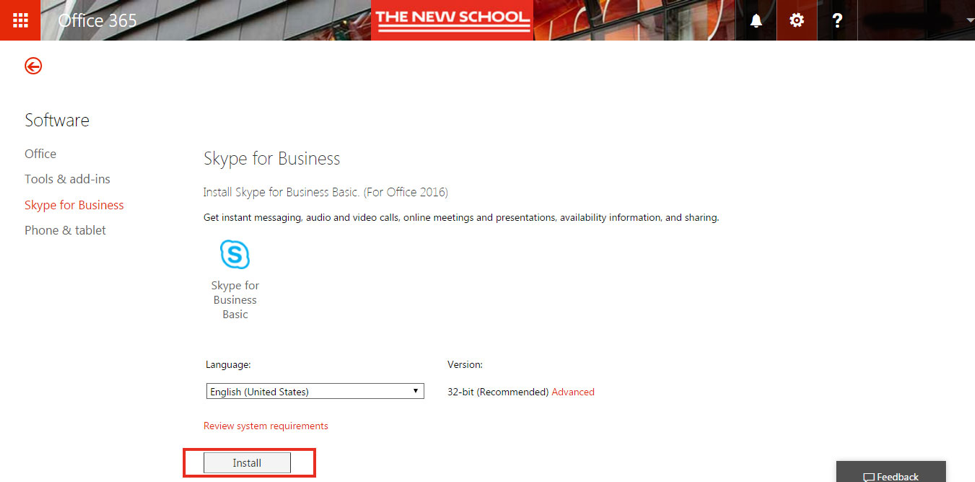Sep 24, 2019 By the time Catalina arrives I'd think Microsoft would have finished migrating everyone over the Teams. Surprised there are still some tenants out there that still have access to Skype for Business, it has long gone as a product. Of the 47 tenants I.
-->Mar 23, 2020 Launch the Skype for Mac Installer Open the Downloads folder and double-click the Skype for Mac installation file to start the installation process. Install Skype on Mac After you double-click the installation file, a Finder window opens and prompts you to add the Skype app to your Applications folder. Open Skype for Business. Skype will ask for permission to use the camera and the microphone. If the above did not fix your problem, uninstall Skype for Business and install the previous version of Skype for Business. Go to Finder Application. Drag Skype for Business from the list to the Trash. Download Skype Installer Package.
Read this topic to learn about hardware, software, and infrastructure requirements for running Skype for Business on a Mac.
The Skype for Business on Mac Client is available for download.
Hardware and software requirements for Skype for Business on Mac
The Skype for Business on Mac client requires Mac OS X El Capitan and higher, and uses at least 100MB of disk space. We support the use of all built-in audio and video devices. External devices must be in the Skype for Business Solutions Catalog.
Note

This list is preliminary and some devices may be qualified for Lync, but not supported on Skype for Business on the Mac.Refer to the System requirements for the minimum hardware required.
Legacy Mac clients
Skype for Business Server 2015 also supports the following legacy clients on computers that are running Mac OS 10.5.8 or latest service pack or release (Intel-based) operating systems (Mac OS 10.9 operating system is not currently supported). For details about supported features, see Desktop client feature comparison for Skype for Business.
Microsoft Lync for Mac 2011 (see Lync for Mac 2011 Deployment Guide)
Microsoft Communicator for Mac 2011 (see Communicator for Mac 2011 Deployment Guide)
These clients are not supported by Skype for Business Server 2019.
Infrastructure requirements for Skype for Business on Mac
The Skype for Business on Mac client leverages both the Unified Communications Management Platform (UCMP) as well as the Unified Communications Web API (UCWA) that our mobility clients use.
The client has the same requirements as our mobility clients in that you must have an Access Edge Server and Reverse Proxy deployed in a supported configuration.
Authentication
The Skype for Business on Mac client supports Cert-based authentication, Microsoft Modern Authentication, and Multi-Factor Authentication when deployed and enabled.
Note
Due to a current limitation, the user's Exchange credentials must be the same as their Skype for Business credentials.
Certificates
Certificates in use on the Access Edge, Reverse Proxy and Front End servers must not use the SHA-512 hash algorithm.
The HTTP Certificate Revocation List must be defined and accessible by the client. For example, we don't support an LDAP entry in the certificate as your Certificate Revocation List.
DNS
Mobility must be properly deployed for the Skype for Business on the Mac client to function properly. A common failure scenario is to have both of the following DNS entries resolvable on the internal network:
lyncdiscoverinternal.<sipdomain>
lyncdiscover.<sipdomain>
How To Install Skype For Business On A Mac
For more information, refer to: Deploying Mobility in Lync Server 2013, and the Microsoft Lync Server 2010 Mobility Guide.